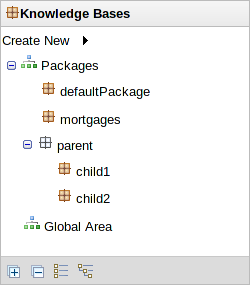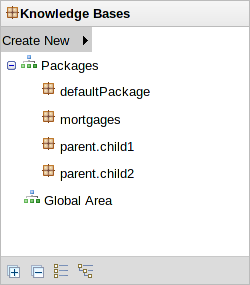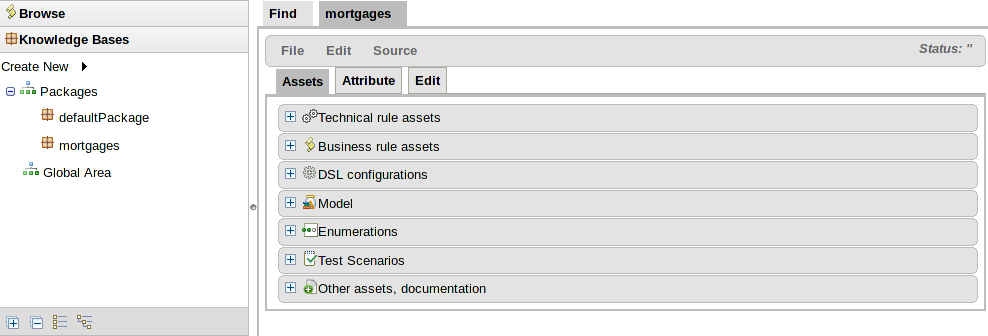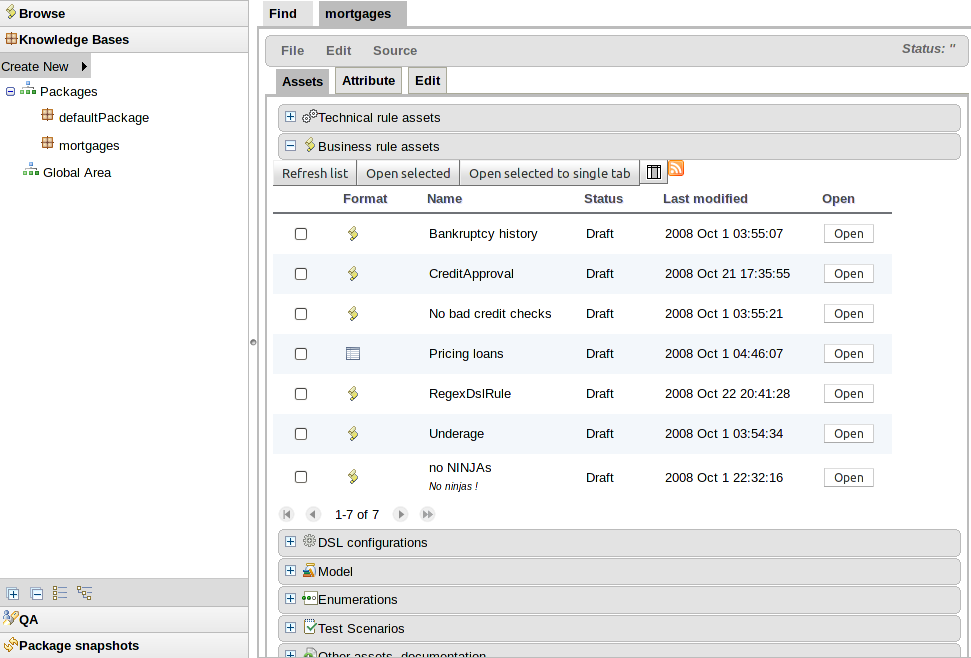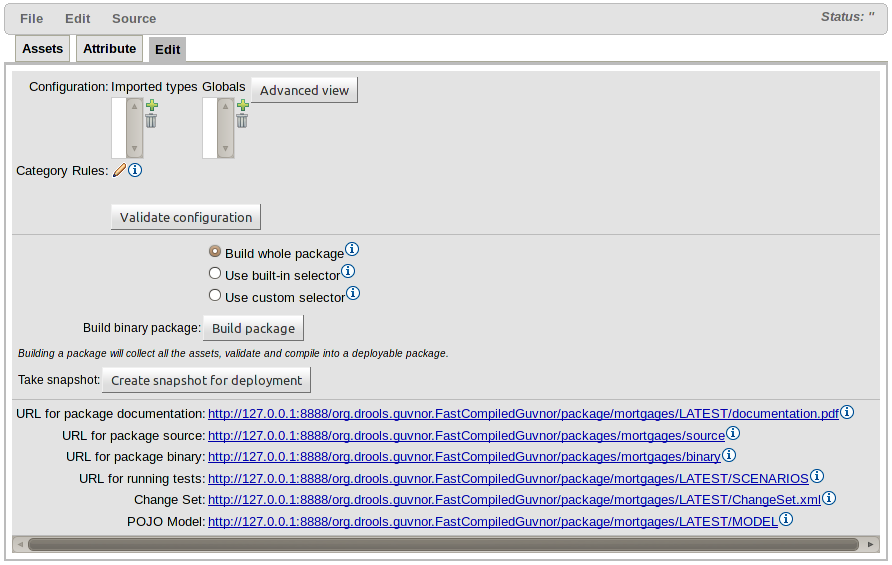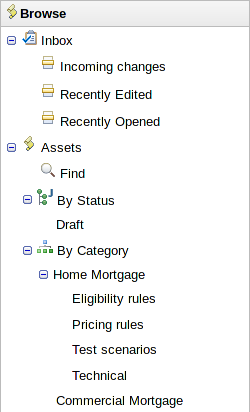The two main ways of viewing the repository are by using the Package Explorer or user-driven Categorization (tagging) as outlined previously.
The Package Explorer appears in the "Knowledge Bases" section of the left-hand side navigation bar. The Package Explorer shows a list of all packages (other than those that have been archived).
The list of packages can either be viewed hierarchically or flat and fully expanded or collapsed using the icons below the tree-view.
Clicking on a package name in the tree-view will launch the Asset Viewer.
The Asset Viewer is launched when a package in the Package Explorer is clicked.
The Asset Viewer shows a list of assets in the package grouped by their type. If no assets exist in the package a warning is displayed.
Expanding a section using the [+] icon reveals the assets contained therein.
Assets are listed in a table that can be paged forwards or backwards and can be opened by either clicking their respective "Open" button, or selecting the required rows and clicking the "Open selected" button. Multiple assets can be opened into a single editor by selecting the required rows and clicking the "Open selected to single tab" button.
A package can be configured by clicking on the "Edit" tab on the Asset Viewer.
The facilities here relate to compiling the package into a binary form. The "Packaging" section of this user-guide provides a detailed narrative on this section.
The category view provides a way to navigate your rules in a way that makes sense to your organization.
The above diagram shows categories in action. Generally under each category you should have no more then a few dozen rules, if possible.
Built into the Guvnor are two useful features to helping manage changes: an Inbox, and a comments section. These features do not affect any execution or access to rules, but are purely for documentation and notification purposes, and are of course always optional to use.
In the "browse" section of the application, there is an "Inbox" tree item, below this are 3 inboxes. "Incoming changes" contains changes to any artifacts that the current logged in user has edited in the past, or commented on. Simply editing or commenting on an artifact registers interest in it to be notified of changes the next time you log in."Recently opened" contains items that have been recently opened (simply opening an artifact will make it appear here, the last 100 recently opened items will appear here). "Recently edited" contains the last 100 recently edited items (artifacts that the current user has made changes to).
Below the documentation box of each artifact, is a "comments" section - simply, you can add a new comment. Administrators can clear all comments on a given artifact, but other users can only append comments. Each comment records what user made the comment, and when. Users who can't edit artifacts can still comment on them.
